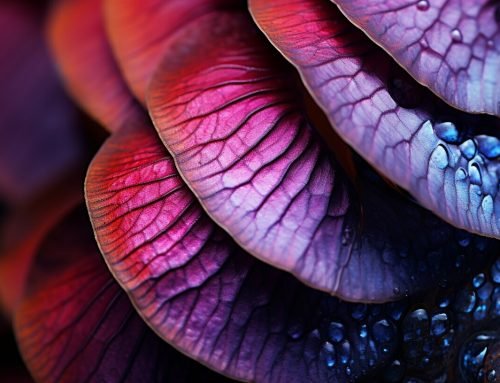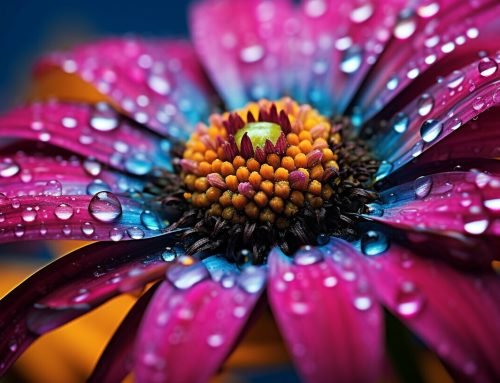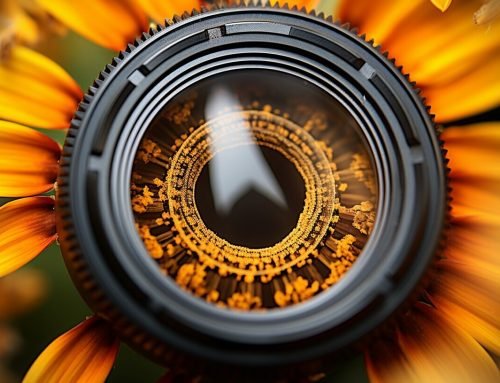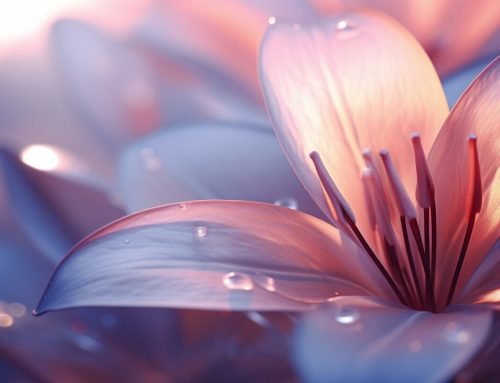Mastering the art of macro photography lighting is crucial for capturing stunning images of small subjects. Whether you are a professional photographer or an enthusiast, understanding the role of lighting in macro photography can take your images to the next level. By harnessing the power of light, you can enhance the details, colors, and textures of your subjects, creating visually captivating and impactful photographs.
Key Takeaways
- Creativity plays a vital role in macro photography, allowing you to find unique angles and add interest to your still-life subjects.
- Investing in essential equipment, such as a sturdy tripod and a dedicated macro lens, is important for achieving sharp and precise shots.
- Choosing the right lighting is crucial. Consider factors like natural vs. artificial light sources, light direction, intensity, angle, and quality to create desired effects.
- Explore various lighting techniques, such as light painting and using ring flashes, to add flair and interest to your macro images.
- A combination of creativity, appropriate equipment, and effective light manipulation is key to mastering macro photography lighting.
The Importance of Macro Photography Lighting
Good lighting is essential for bringing out the intricate details, vibrant colors, and delicate textures in macro photography. When capturing images of small subjects, such as flowers, insects, or even everyday objects, the right lighting can make a significant difference in the final result. It enhances the overall composition, highlights the subject’s features, and adds depth and dimension to the image.
In macro photography, every tiny detail matters. The play of light and shadow can transform an ordinary subject into a captivating masterpiece. By using the right lighting techniques, you can create dramatic effects, emphasize specific areas, and capture the subject’s unique characteristics.
“Lighting can be your most powerful creative tool in macro photography. It allows you to showcase the subject’s beauty, evoke emotions, and create a visual story.”
Whether you prefer natural or artificial light, mastering macro photography lighting requires careful consideration and experimentation. Natural light offers a soft, diffused glow that can beautifully illuminate your subject. However, it is important to understand how to control and manipulate this light source to achieve the desired effects. On the other hand, artificial lighting, such as LED mats or ring flashes, provides more control over the intensity, angle, and quality of light, allowing for precise adjustments.
Choosing the right lighting equipment for macro photography
When it comes to macro photography lighting equipment, a tripod is a must-have accessory. It ensures stability and sharp focus, especially when using a shallow depth of field. Additionally, investing in a dedicated macro lens, like Tamron’s SP 90MM F/2.8 Di VC, can greatly enhance your macro photography experience. This lens offers optimal magnification and clarity, enabling you to capture the finest details of your subjects.
To achieve professional-quality lighting, consider using specialized lighting equipment like the Westcott daylight Flex LED mats. These versatile and portable lights provide consistent and even illumination, perfect for macro photography. Their flexibility allows you to shape the light precisely, highlighting the subject’s key features and creating stunning visual effects.
| Equipment | Features |
|---|---|
| Tripod | Stability, sharp focus |
| Tamron’s SP 90MM F/2.8 Di VC | Dedicated macro lens, optimal magnification |
| Westcott daylight Flex LED mats | Consistent, even illumination |
In conclusion, understanding the importance of macro photography lighting and mastering the art of lighting techniques is essential for capturing stunning macro images. By utilizing creativity, appropriate equipment, and effective light manipulation, you can bring out the beauty and intricacy of small subjects, resulting in impressive and visually striking photographs.
Essential Equipment for Macro Photography Lighting
To achieve optimal macro photography lighting, there are several essential equipment pieces you should consider.
First and foremost, a sturdy tripod is a must-have. When shooting macro subjects, you often need to use a small aperture to get the desired depth of field, which means longer exposure times. Using a tripod ensures that your camera remains steady, resulting in sharp and clear images. It also helps you maintain consistent framing and composition, especially when working with small, delicate subjects.
Another crucial piece of equipment is a dedicated macro lens. Tamron’s SP 90MM F/2.8 Di VC lens is an excellent choice. It has a focal length specifically designed for macro photography, allowing you to get close to your subjects while maintaining a comfortable working distance. The lens’s wide aperture enables you to create a shallow depth of field, isolating your subject and producing beautiful bokeh.
| Equipment | Key Features |
|---|---|
| Tripod | Provides stability for longer exposures and consistent framing |
| Tamron SP 90MM F/2.8 Di VC Macro Lens | Specifically designed for macro photography, allows close focusing and shallow depth of field |
When it comes to lighting, the Westcott daylight Flex LED mats are highly recommended. These professional lighting tools provide a soft and even light source, perfect for capturing pristine macro images. The flexibility of the LED mats allows for precise control over the direction, angle, and intensity of the light. This versatility ensures that you can achieve the desired lighting effects, accentuating the details, colors, and textures of your subjects.
“The Westcott daylight Flex LED mats are a game-changer for macro photography. The quality of light they produce is outstanding, and their flexibility makes them incredibly versatile. They have revolutionized the way I capture small subjects.” – Professional Photographer
Summary:
- Sturdy tripod for stability and sharp focus
- Tamron SP 90MM F/2.8 Di VC Macro Lens for close focusing and shallow depth of field
- Westcott daylight Flex LED mats for soft, even lighting and precise control
By investing in these essential equipment pieces, you can take your macro photography lighting to the next level. Remember, mastering the art of macro photography lighting requires a combination of creativity, appropriate equipment, and the ability to control and manipulate light effectively. With the right tools at your disposal, you’ll be well on your way to capturing stunning macro images that truly shine.
Techniques for Macro Photography Lighting
Elevate your macro photography lighting skills with these effective techniques that will take your images to the next level.
When it comes to macro photography, lighting plays a crucial role in capturing the intricate details and textures of small subjects. By mastering different lighting techniques, you can enhance the overall quality and visual impact of your macro images.
Add Movement and Water
One technique to consider is adding movement or water to your still-life subjects. This can create dynamic and captivating images that stand out. You can achieve this by using a spray bottle to mist water onto your subject, simulating natural dewdrops or rain. It adds a touch of freshness and brings your subject to life.
| Technique | Description |
|---|---|
| Light Painting | Using a small flashlight or LED light, you can selectively paint light onto specific areas of your subject to highlight details and create a sense of drama. |
| Ring Flashes | Ring flashes are ideal for macro photography as they provide uniform lighting around the subject, reducing harsh shadows and delivering even illumination. |
| Reflectors | Using reflectors can help bounce light onto your subject, filling in shadows and adding a subtle glow. They come in various sizes and materials, allowing you to control the intensity and direction of the reflected light. |
Experimenting with different lighting techniques and equipment will give your macro photography a unique and artistic touch. By incorporating movement, water, light painting, or ring flashes into your workflow, you can create stunning macro images that capture the viewer’s imagination.
Choosing the Right Lighting for Macro Photography
Selecting the right lighting is essential for achieving stunning macro photography results – here’s how to do it. When it comes to macro photography, lighting plays a crucial role in highlighting the intricate details, textures, and colors of your subject. To ensure optimal lighting, you need to consider a few key factors.
Natural vs. Artificial Light Sources
One of the first decisions to make is whether to use natural or artificial light sources. Natural light can give your macro images a soft and diffused look, especially during the golden hour. However, it’s essential to take advantage of overcast days or use a diffuser to avoid harsh shadows. Artificial light, on the other hand, offers more control and can be achieved using studio strobes, continuous lights, or even LED panels. Experiment with different sources to find the one that best suits your creative vision.
Controlling Light Direction, Angle, Intensity, and Quality
Controlling the direction, angle, intensity, and quality of light is crucial in macro photography. You can manipulate the direction of light by using reflectors or blocking unwanted light with flags. Varying the angle of light can produce different effects, allowing you to create dramatic or subtle highlights and shadows. Adjusting the intensity of light can be achieved by using dimmers or changing the distance between the light source and the subject. Lastly, consider the quality of light, whether soft or harsh, and how it affects the overall mood and appearance of your images.
Practical Tips and Solutions
Here are some practical tips and solutions to help you achieve the best lighting for your macro photography:
- Experiment with different light modifiers, such as diffusers, reflectors, and snoots, to achieve the desired lighting effects.
- Use a macro lens with image stabilization or a tripod to ensure sharp focus, especially when shooting at shallow depths of field.
- Consider using light painting techniques to add creative and dynamic elements to your macro images.
- Invest in a ring flash, which provides even illumination and reduces harsh shadows when shooting up close.
By considering these factors and utilizing the right lighting techniques, you can master the art of macro photography lighting and capture breathtaking images of the small wonders around us.
| Lighting Factors | Tips |
|---|---|
| Natural vs. Artificial Light | Experiment with both to see which suits your creative vision. Use a diffuser for natural light and explore different artificial light sources. |
| Direction, Angle, Intensity, and Quality | Control the direction of light using reflectors and flags. Vary the angle for different effects. Adjust intensity with dimmers or changing the distance. Consider the quality of light for desired mood and appearance. |
| Practical Tips | Experiment with light modifiers, use a tripod or image stabilization, try light painting techniques, and consider investing in a ring flash for up-close shots. |
Recommended Lighting Equipment for Macro Photography
Discover some of the top-notch lighting equipment options that can elevate your macro photography to new heights. The right lighting gear can greatly enhance your ability to capture stunning images of small subjects with precision and detail.
One notable lighting option is the Westcott daylight Flex LED mats. These flexible and portable light sources provide a consistent and soft illumination for your macro shots. With their adjustable brightness and color temperature, you can easily achieve the desired lighting effects to bring out the textures, colors, and details of your subjects.
Another excellent choice is the Profoto B10 Plus. This powerful and compact studio light offers exceptional versatility and control over your lighting setup. Its TTL capabilities, high-speed sync, and adjustable power output allow you to work with ease in various shooting conditions, both indoors and outdoors.
For those seeking a more budget-friendly option, the Yongnuo YN560-III flash is a reliable choice. This flash unit offers manual control for precise lighting adjustments, making it suitable for photographers who prefer a hands-on approach. Additionally, its built-in wireless receiver enables off-camera flash techniques, giving you greater flexibility in your lighting setup.
When investing in lighting equipment for macro photography, it’s essential to consider the specific needs of your shooting style and subjects. Whether you choose professional-grade LED mats, versatile studio lights, or budget-friendly flash units, the right lighting gear can make a significant difference in the quality and impact of your macro images.
Conclusion
Mastering macro photography lighting is a crucial step towards capturing breathtaking images of small subjects, and with the right mindset, equipment, and techniques, you can take your photographic artistry to a whole new level.
Creativity plays a vital role in macro photography, allowing you to discover interesting angles and incorporate dynamic elements like movement or water into your still-life subjects. It is through your creative vision that you can capture unique and eye-catching imagery that stands out from the crowd.
When it comes to equipment, a solid tripod is essential to ensure sharp focus, particularly when shooting at shallow depths of field. Pairing your camera with a dedicated macro lens, such as Tamron’s SP 90MM F/2.8 Di VC, provides the perfect distance between your camera and subjects, delivering stunningly detailed shots.
But perhaps the most crucial aspect of macro photography is lighting. Professional lighting solutions, such as the Westcott daylight Flex LED mats, enable you to capture pristine images with a beautifully shallow depth of field. It is important to carefully choose the right light source, whether natural or artificial, and have control over the direction, angle, intensity, and quality of the light to achieve the desired effects in your macro shots.
Furthermore, embracing creative lighting techniques and utilizing specialized equipment like light painting or ring flashes can add an extra level of flair and interest to your macro images, elevating them to true works of art.
In conclusion, mastering the art of macro photography lighting requires a combination of creativity, appropriate equipment, and the ability to control and manipulate light effectively. By harnessing these elements, you will be well on your way to capturing awe-inspiring macro images that leave viewers breathless.
FAQ
Why is lighting important in macro photography?
Lighting is crucial in macro photography as it enhances the details, colors, and textures of small subjects, resulting in stunning images.
What equipment do I need for macro photography lighting?
Essential equipment for macro photography lighting includes a solid tripod for sharp focus and a dedicated macro lens, such as Tamron’s SP 90MM F/2.8 Di VC, for optimal distance and precision.
What techniques can I use for macro photography lighting?
Creative lighting techniques, such as finding interesting angles, adding movement or water to still-life subjects, and incorporating light painting or ring flashes, can add flair and interest to your macro images.
How do I choose the right lighting for macro photography?
When choosing lighting for macro photography, consider the source of light (natural or artificial), and control the direction, angle, intensity, and quality of the light to achieve desired effects. Also, consider practical tips and solutions for optimal results.
What are some recommended lighting equipment for macro photography?
Recommended lighting equipment for macro photography includes products like the Westcott daylight Flex LED mats, which provide professional lighting for capturing pristine images with a shallow depth of field.






